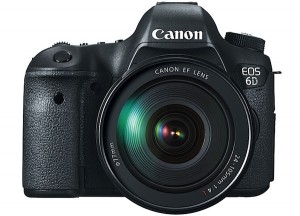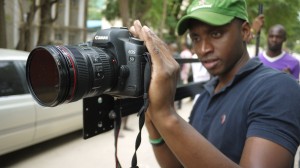Archive for the ‘Video Shooter (Book)’ Category
 Aspiring Shooters in the Philippines
Aspiring Shooters in the Philippines
I continue to be amazed and humbled by the young shooters I encounter around the world, and this is especially the case in Asia where I have been conducting camera and lighting workshops, including last week in Manila and Makati City. I was especially impressed by the enthusiasm of the young shooters at television station GMA7 under the tutelage of Virgilio Muzones, a true mentor and friend to hundreds of young aspiring craftsmen. My followup public workshop in Makati attracted 300 aspiring filmmakers, from first-year university students to newly minted pros eager to enhance their visual storytelling prowess. I can’t wait to see what the young people do next with their newfound skills! For sure great things are in store for the young shooters of the Philippines!
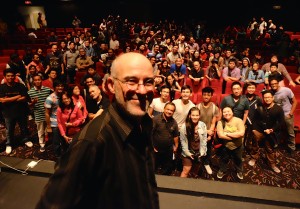
20 March 2014.
Three hundred eager young shooters and filmmakers attended my public workshop in Makati City Philippines.
 The Truth About Crop Factors
The Truth About Crop Factors
A reader wrote me recently regarding an online merchant’s ad touting the benefits of a 50mm DSLR lens on a smaller format camera. The ad claimed that due to the 2X crop factor in a Micro Four-Thirds camera like the Panasonic GH3 the 50mm lens could serve as the functional equivalent of a moderate telephoto, a popular choice for portrait photographers. At first the reader accepted the ‘equivalency’ assertion, but now he is no longer sure. Since the narrow angle of view is due to the smaller imaging target rather than magnification, can a 50mm lens ever be functionally or aesthetically equivalent to an 85mm or 105mm?
A 50mm lens is still a 50mm lens regardless of the camera’s target or sensor size. While it’s true that the 2x crop factor reduces the viewing angle and field of view the foreshortening of perspective one expects from a moderate telephoto is not present. This contributes to an unnatural cropped look; this look characterized by the increased depth of field of the 50mm focal length compared to an 85mm or 105mm.
The same logic should occur to camera folks touting the virtues of 4K image capture which they say makes possible significant cropping to HD 1920 x 1080 inside the 4096 pixel frame. The cropping may indeed constrain the field of view but the unnatural perspective inside the cropped frame may appear be potentially disturbing to audiences.
SLR portrait lenses 85mm – 105mm are effective because they help preserve a normal i.e. realistic roundness in the face of subjects when shooting at normal distances of six to eight feet (1.5m – 2.5m). A 50mm lens at only a few feet from the subject may produce too much roundness and thus produce a look like an ogre. Maybe this is what you want. Maybe it isn’t.
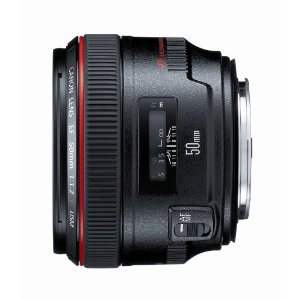
Given a 2X crop factor this 50mm can never be the functional equivalent of a moderate telephoto portrait lens.
 VIDEO SHOOTER 3rd Edition Now Available!
VIDEO SHOOTER 3rd Edition Now Available!
It’s finally here! With lots of new and updated material, including discussion questions for educators and in-depth chapters on the DSLR and 3D shooting and storytelling.
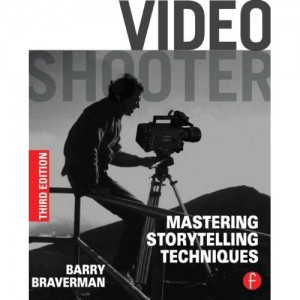
 What’s Really Important Is Not the Technical Crap
What’s Really Important Is Not the Technical Crap
Then why the obsession with tech chatter in the many online forums? What is it about tech talk that we find so engaging and enthralling?
In the mid 1980s, the toy company Fisher-Price manufactured a 2-bit monochrome camera that recorded to an ordinary audio cassette. Pixelvision’s cryptic images continue to attract storytellers today, despite, or more accurately due to its obvious lack of technical sophistication. The fact is that stories work for different reasons, and can often be quite successful despite a lousy script, poor lighting, or even I shutter to say, bad camerawork.
Audiences can’t care less if you shoot your story on NXCAM, 35mm Cinemascope, or your iPhone. No one walks out of a movie theatre and says, ‘Gee, that was a great movie but it was shot 4:2:0’. So as you read this blog and perhaps glean something useful from it let’s keep all this tech talk in perspective.
 Uh oh. Fire at Annapurna Studio
Uh oh. Fire at Annapurna Studio
No one was killed in the devastating fire that destroyed half the studio in Hyderabad last week but the substandard electrical practices that led to it will almost certainly ensure more such fires occur in the future.
In less than an hour the sound stage and sets at Annapurna Studios were reduced to a pile of ashes, and for the film school that shares this space the lesson couldn’t be clearer: Better adopt some basic electrical safety standards and adopt them fast. The studio management to its credit had recently tried to impose a safety code but the veteran “electricians” who caused this fire appear to have little interest in updating their skills or lack thereof.
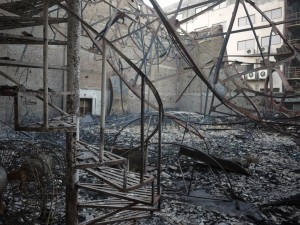
Fire destroyed the largest sound stage at Annapurna Studios in Hyderabad India 14 January 2013.
 Emoting Actresses in Hyderabad
Emoting Actresses in Hyderabad
I’m in Hyderabad this week and working with a joint filmmaking group from Annapurna School of Film and Media and Chapman University. I sometimes forget that India has the largest film industry in the world, and as such has evolved its own style of acting that can only be described as big and over the top.
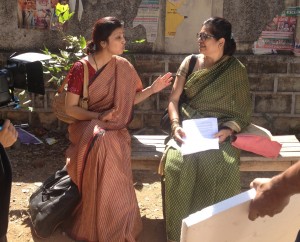
Scene from Proud Mothers shooting in Hyderabad. 17 January 2013.
 The Spirit of Southeast Asia
The Spirit of Southeast Asia
This month I am leading a series of camera workshops in Kuala Lumpur and am duly impressed by the spirit of my students and overall level of media activity here. While the mood in the US and UK can only be described as glum it is certainly not the case here where aspiring filmmakers and content creators of every type appear eager to learn the old cinematographer’s skills in combination with the new camera technologies.
In the coming months I will be venturing on to Hyderabad and Dhaka, where demand for skills and training is high. With four new television stations having come on line in Dhaka this year facility managers are hard pressed to find sufficient qualified workers to fill the available positions. No doubt the economic growth in Malaysia and throughout the SE Asia region is fueling the demand for media professionals but it is also an intrinsic yearning and high value placed on education in general in these societies that are playing a large role.
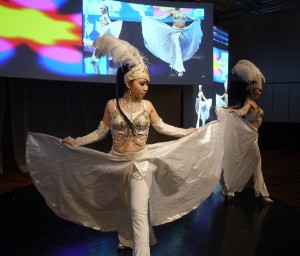
A stage show at Panasonic Showcase Malaysia artfully blends the traditions of regional dance and the latest display technologies. 13 December 2012.
 The DSLR Wannabes
The DSLR Wannabes
The line between still and moving is rapidly blurring as the latest generation DSLRs become more robust and capable as professional video cameras. The addition of SMPTE timecode in the Canon 6D and Panasonic GH3, in addition to manual audio levels and more extensive control over exposure and frame rates, suggest that that the line may disappear entirely before very long.
The DSLR can’t thwart the laws of physics, however, and the camera’s diminutive bodies and lack of proper heat sinks cannot quite yet tackle the processing loads demanded by today’s sophisticated shooters. To shoot HD RAW the DSLR would need to increase its on-board processing power on the order of 20 times, a development that is simply not in the memory cards anytime soon.
So the DSLR for all its expanded video capabilities and functions will remain several orders of magnitude below a true video camera for the foreseeable future. If you study the media landscape and examine popular camcorders like the Panasonic AF100, Sony FS100, and Canon C500, you see cameras that have been profoundly influenced by the DSLR.
No doubt that will continue to be the case as DSLR wannabes multiply and join the fray in 2013. I don’t see it being any other way, given that Canon appears to be the only profitable manufacturer of cameras these days.
 The Need To Reinvent Ourselves
The Need To Reinvent Ourselves
It’s important to keep in mind that a shooter today is more than just an adept visual storyteller. A shooter is also a horse trader, an educator, and at times an ardent cheerleader. It seems that more projects are going this way and frankly it’s not all bad. Lately I’ve been finding myself involved in feature productions from an earlier stage. I am being asked to read and consult on scripts and offer comments. In years gone by that would seldom if ever happen.
The reason for this development may be simply my age and the presumed wisdom I might bring to a project, or it could be more a function of who is producing and directing movies these days. More than ever there seems to be a demand for genuine camera expertise, especially given the burgeoning digital morass in which we currently operate.
There is a growing realization also that a shooter and director really do share the same sensibility, and thus this core team today can form a much more potent collaboration. Just as the cinematographer excludes the superfluous camera movement and irrelevant object in frame the director in his or her way does the same thing, seeking out scenes to delete, dialogue to omit, and actors’ gestures to forego.
It wasn’t long ago that the democratization of the medium was thought to spell the end of craft as we knew it. Just a look around at a few of the shows with outstanding craft on HBO, AMC, and elsewhere, it seems to be having precisely the opposite effect.
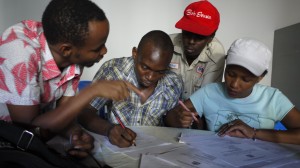
The team of ‘Network’ brainstorm story ideas in Dar es Salaam, Tanzania, 25 June 2012.
 Join Me in Tanzania 13-Day Camera Workshop
Join Me in Tanzania 13-Day Camera Workshop
If you are in East Africa this month please join my camera and storytelling workshop offered in Dar es Salaam July 17 – 30. For more information contact Irene Nilsen-Moe at Get Real Training info@getrealtraining.org or call +255 777 946 413.
